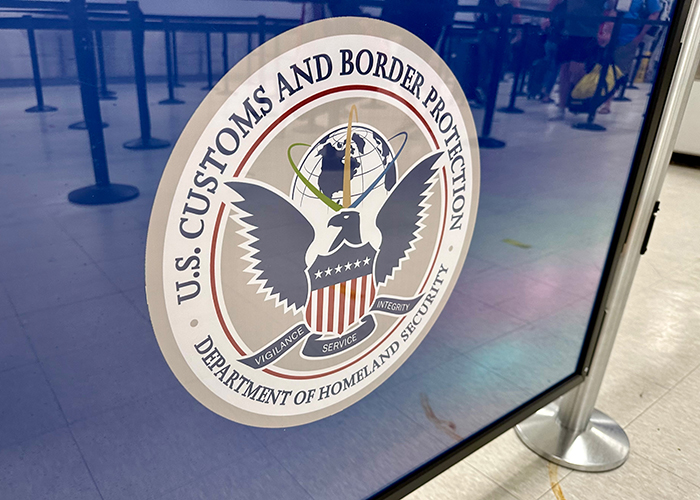Navigating the Storm
Prepare for ICE on-site visits and ensure compliance with IRCA

The challenges of being an employer are always evolving. One of those evolving issues is compliance with the Immigration Reform and Control Act.
At its most basic, IRCA requires an employer to provide documented eligibility for all of its human resources. Employment Eligibility Verification Form I-9 is used to verify the identity and legal work eligibility of paid employees. The law outlines express requirements employers must meet to attest to their worker’s eligibility for employment and steps that must be taken to avoid recruiting unauthorized workers. Most employers are generally familiar with this aspect of the federal law and need to effectively address work eligibility inquiries.
Many employers are not as familiar with other aspects of IRCA enforcement; in particular, an on-site visit by representatives of United States Immigration and Customs Enforcement, or ICE. Taking a few steps to prepare for such events can help your company and your employees respond appropriately and in accordance with all legal requirements.
Plan for on-site inquiry
First, it is recommended to designate a company point of contact who will be responsible for any ICE inquiry into employee work eligibility. If you have multiple locations, consider designating an employee representative for each site, or alternatively, a point of contact to field inquiries from multiple locations depending on the structure of your business. Your designated representative should be educated and trained, as well as provided with contact information for legal counsel in the event outside assistance is needed to address any inquiry.
Second, conduct an internal review of your employee work eligibility documents to prepare for an ICE inquiry and confirm compliance with all federal laws. Ensure each employee’s work eligibility can be supported with the necessary documents. Promptly address any discrepancies or missing documentation. On an ongoing basis, periodic internal audits will ensure your documents remain current and complete, especially if the nature of your workforce is subject to frequent change or may prove seasonal. Your designated contact should also be familiar with the documents that will need to be presented in the event a work eligibility inquiry is made. The contact should also have the credentials to access those documents at all times.
On-site ICE visit
ICE may visit your physical company property and request, or even demand, to be permitted entry to conduct a work eligibility inquiry. This request can proceed only with either your consent or through ICE’s provision of a valid warrant. In the interest of maintaining formality and following proper procedures, it is advisable to always first request a valid warrant be presented. This step will help ensure that decision-making regarding consent is removed from your employee-representative’s scope of responsibility in reliance upon established company procedures. Providing clear guidance to review and confirm a valid warrant before access can assist your designated representative in a successful interaction with ICE.
It is important to train your designated representatives to determine whether a specific warrant is valid and sufficient to proceed. For example, the warrant must be signed by a judge, as opposed to an administrative arrest warrant. This is where legal counsel can assist if there is any question regarding the nature of a presented warrant.
Employers can consent to access without a warrant. In those circumstances there can be later contests by affected individuals and the scope of what is subject to disclosure can become legally clouded. Regardless, access can be voluntarily and also be withdrawn at any point.
Document compliance
Once the issue of entry is addressed, documentation and compliance become the focus. Ideally, through preparation, review and training, your company’s designated contact will already be familiar with the I-9 documents that need to be presented to confirm compliance with IRCA. Providing complete and accurate documents for each employee will result in successful completion of this administrative process. Here too, the scope of information subject to access can be spelled out in the warrant and should be reviewed to ensure full compliance.
Escalated or external guidance
While your designated company representative should be trained to evaluate the sufficiency of a warrant presented for entry, this person should also feel comfortable to reach out to management, legal counsel or other escalation pathways within your company. If there are questions surrounding the validity of a warrant, or if no warrant is presented, it is acceptable to request that ICE remain outside of private, employee-only portions of the premises. At that point, internal communications can occur to determine how to best proceed while remaining compliant. If needed, the designated representative should escalate communication to a person within your company who can quickly assist to provide further instruction or reach out to those who can.
Employee rights
As a final consideration, just like employers, individuals also have rights. These can include the right to remain silent, even if questioned, and the right to request legal representation. Companies need to ensure that their policies balance complying with legitimate requests for access, while also not infringing on the rights held by individual employees.
Taking some prudent steps in advance, employers can prepare so that a potentially stressful situation becomes a simple administrative inquiry in keeping with established company protocol.
